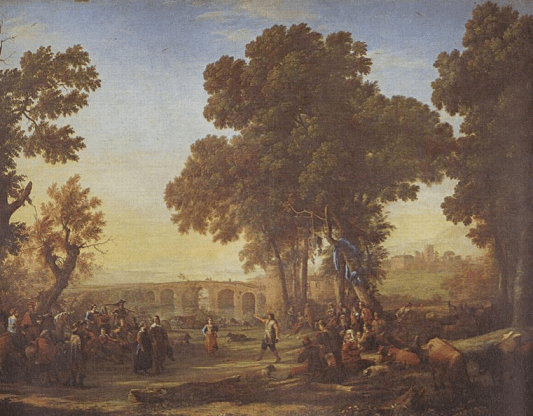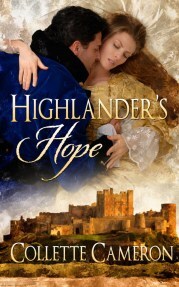Vanessa Riley's Blog, page 40
April 1, 2025
Your Favorite Holiday… And We Don’t Mean Christmas!
We asked our Reflections authors what some of their favorite holidays were and where they are most wanting to go.
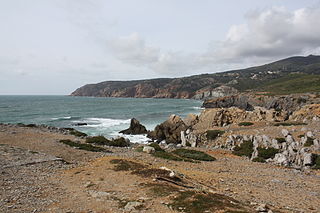 Coast of Lisbon, Protugal
Coast of Lisbon, ProtugalLaurie Alice Eakes
Nine days in Portugal. It’s such a beautiful country, and the people are warm and friendly. I stayed in a little fishing village 35 kilometers south of Lisbon where I ate fish caught just that morning, and soaked up a great deal of sunshine when home was getting an ice storm. I also too forays to historic landmarks like a fountain that has been drawing water from a mountain stream for nearly a thousand years.
Where would I like to go? Lots of places still on my “to visit” list. And I’d like to get back to a few others. You know, I’d rather like to go to the site of the Battle of Waterloo for the 200th anniversary.
Susan Karsten
My favorite adult vacation was to Hawaii. My favorite childhood vacation was to Breezy Point resort in the region of Brainerd, MN. My current dream vacation would be to get back to Hawaii. It’s such a world apart.
Kristi Ann Hunter
I had the opportunity to spend nearly two weeks in Europe touring the Alps and Italy. The mountains are something I will never forget. Standing on top of some of those viewpoints you can see nature for miles, with no manmade obstructions or anything. Just mountains and snow and sky. It’s beautiful. Things there are so much older than they are in America. In the States something that is 200 years old is an amazing relic. There, it’s practically new. Okay not really, but it feels like it when you look buildings that are nearly a thousand years old.
 Swiss Alps near Zermatt, Switzerland
Swiss Alps near Zermatt, SwitzerlandI would really like to get back to England for a research trip. Tour more of the old homes and museums, take pictures of the countryside. I would also really like to see Australia someday. Closer to home, I eventually want to visit all fifty states. I’m about half way there now.
Vanessa Riley
 I rented a condo for a week with all my brothers and their families on an island off Savannah. It was a blast. Bike riding, cooking fresh seafood, watching movies until late. No takers on P&P though.
I rented a condo for a week with all my brothers and their families on an island off Savannah. It was a blast. Bike riding, cooking fresh seafood, watching movies until late. No takers on P&P though.
Kristy L. Cambron
My favorite vacation has been to the quiet beaches of the Outer Banks, North Carolina. My sister and I had a weekend getaway a few years ago and I’ve never forgotten it. Ocracoke Island’s thriving artists’ colony and lazy bike rides we took to the beach I will always remember. Maybe it was the special company I loved the most? 
As for where I want to go? Paris. It’s always been Paris – c’est bon!
Naomi Rawlings
My favorite vacation was to Finland before my junior year of high school. We have some family friends over there, and it’s a really beautiful country. Did you know they have church buildings that are 400 years older than the United States? We saw one built in the 1300s. I’ve never seen a more beautiful church in my life.
 Angkor Wat in 1866 before refurbishment.
Angkor Wat in 1866 before refurbishment.As for a favorite place I would like to go, I’m a little weird so I’d go for something in Central or South America that would allow me to see some ancient Indian ruins. I’ve wanted to visit Angkor Wat since I was in high school. But actually those ruins have been restored and turned into a bit of a tourist destination. So I’d rather go to some less visited area and see ruins with grass and trees and the like growing out of it.
What about you? What was your favorite holiday? Where would you like to see? Have you been to any of our favorite places? We’d love to hear about it in the comments below.
All pictures courtesy of Wikimedia Commons.
Originally posted 2013-06-19 10:00:00.
The post Your Favorite Holiday… And We Don’t Mean Christmas! first appeared on Vanessa Riley's Regency Reflections.
March 31, 2025
And You Think Your Street Needs Repairs
To go on holiday, or even to market from farm or country house, the Regency traveler needed to make that journey on what were called roads, yet usually resembled nothing more than rutted tracks. In other words, the roads in Regency England barely managed to qualify for that nomenclature.
Roads were made of stones roughly broken into the size of bricks and laid in a bed of earth. They weren’t crowned (higher in the middle). Imagine the disaster that caused in a wet country like England, especially in the winter. Rain fell. Mud oozed between those stones, and the stones shifted, creating ruts and an unstable surfaces over which horses stumbled and coaches bounced. In many counties such as Cornwall, the roads simply did not exist beyond mere tracks. Around Bristol, the roads became impassible in the winter.
As a result of these bad roads, coaches often turned over, causing injury and even death to the passengers. Bridges collapsed under the weight of coaches, plunging the occupants and their luggage into the rivers below. And no passenger could count on actually riding the entire journey. Often they had to exit the coach and walk so the horses could haul the vehicle up a muddy or rutted incline. In winter, passengers sometimes froze to death in unheated coaches, as the conveyance slogged through frozen ruts of mud or over ice-slick stone.
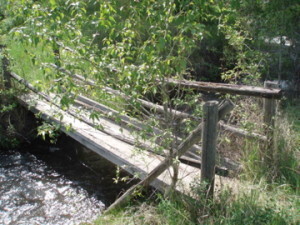 Dilapidated bridge photo courtesy of Angela Breidenbach
Dilapidated bridge photo courtesy of Angela BreidenbachThen Thomas Telford came along. From 1815, to 1829, he improved the road between London and Holyhead at the cost of 1,000.00 pounds per mile. His road was grated with a slope from crown to edge to ensure drainage. Stones about ten inches deep were laid upon this surface. He laid stone chippings atop this layer. Finally, a steam or horse-drawn roller compressed the top layer. The chippings compressed thus locked into a smooth mass.
John Macadam improved on this technique even further. Macadam used hand-broken stones around six ounces apiece to form a thin layer. Traffic itself compressed these angular stones into a smooth surface. Or, if one still did not wish to travel on the uncertainty of the roads, one could take a canal boat to many locations.
My thanks to the wonderful traditional Regency author Emily Hendrickson (www.emilyhendrickson.net) for allowing me to use much of her research on road conditions and improvements in the Regency.
Originally posted 2013-06-17 03:24:25.
The post And You Think Your Street Needs Repairs first appeared on Vanessa Riley's Regency Reflections.
SECRET CODES IN THE NAPOLEONIC WARS
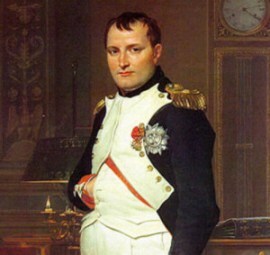
The hero of the romance is usually back from the Peninsula, recovering from an almost fatal wound—but alive and whole, thank goodness, and still dashing in his red coat, though perhaps a bit wan and lean in the cheek.
 Which peninsula was this? It was the Iberian Peninsula, encompassing both Spain and Portugal. England and France fought over this peninsula between 1807 and 1814. The peninsula catapulted then Lt. General Arthur Wellesley—later the 1st duke of Wellington—to fame.
Which peninsula was this? It was the Iberian Peninsula, encompassing both Spain and Portugal. England and France fought over this peninsula between 1807 and 1814. The peninsula catapulted then Lt. General Arthur Wellesley—later the 1st duke of Wellington—to fame.
The armies depended on couriers conveying messages from troop to troop and commander to commander over the vast Spanish plain. Partisan fighters intercepted many of these French messengers and passed along their dispatches to the British.
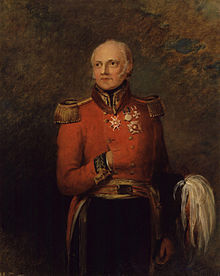 A key but little known player in the British army was George Scovell, a deputy assistant quartermaster general, who had a knack for languages, organization and detail. The hero of my current regency, Moonlight Masquerade, is a little like this soldier. He is able to see patterns where others see only random numbers.
A key but little known player in the British army was George Scovell, a deputy assistant quartermaster general, who had a knack for languages, organization and detail. The hero of my current regency, Moonlight Masquerade, is a little like this soldier. He is able to see patterns where others see only random numbers.
If you’d like to try out your abilities at some simple code, try to decipher the names of my hero and heroine in Moonlight Masquerade using the key below.
344, 2&6((62, .)# @4(6)4 ”4 &.9
KEY:
A = . L = ( W = ”
B = 1 M = 9 X =
C = @ N = ) Y = –
D = # O = ! Z = ^
E = 4 P = 2
F = % Q = ?
G = 5 R = 3
H = & S = ,
I = 6 T = :
J = * U = 7
K = 8 V = /
Originally posted 2013-06-14 10:00:00.
The post SECRET CODES IN THE NAPOLEONIC WARS first appeared on Vanessa Riley's Regency Reflections.
March 30, 2025
Fête or Famine: The Everyday Holiday

One cannot have too large a party. A large party secures its own amusement.
~ Jane Austen, Emma (1816)
I’m sitting in an Italian restaurant in downtown Indianapolis on a perfect Sunday afternoon, with my hands wrapped around the warm mug of an after-dinner cappuccino. As I look around the table at my friends (authors with whom I share a particular passion for reading and writing Christian fiction), I see familiar smiles. There’s laughter. Good food being passed around family-style. Talk of husbands and children. We engage in chat about the publishing industry and brainstorm storyline this and character that… And although none of us had to drive all that far to reach our small Sunday feast, this quiet afternoon in June became something of an unexpected getaway.
It made a holiday out of the everyday.
Our topic of focus this month is vacationing. And while many of us immediately think of vacationing as going away on a retreat (perhaps to the seashore or to an English cottage in the countryside), there are many definitions of a holiday that can remain quite close to home. Though the outdoor balls, picnicking and formal parties of the Regency defined the summer holidays in many ways, we may find that our modern celebrations are not all that different…
So in homage to the feast, festival, backyard barbecue and the good old county fair, here’s a little fun for finding a holiday in the commonplace, everyday gathering – the party!
Village Fête (La Fête villageoise), Claude Lorrain (1639)
To Fête or Not to Fête
n. a feast or festival, a celebration, party; v. to celebrate or throw a party
The first use of the term fête is debatable. My mighty authors’ Thesaurus Rex App cites its first use in England by art historian and writer Horace Walpole (1717-97), followed by the first use of verb form in 1819. However, numerous historical resources cite the term to have been widely used in 17th Century Europe, as in the famous The Village Fête painting by Flemish painter Peter Paul Rubens (1635) Village Fête by French painter Claude Lorrain (1639), and in the 18th Century, to describe painter Jean Antoine Watteau’s work as fête galante (a French term used to describe the lofty yet idle recreation of the aristocracy under the reign of Louis the XIV).
The English term fête comes from the French for the same word, and could also refer to the formal party or social gathering that was frequented in the Regency.
“Formal visits, balls and other social occasions feature largely in Jane Austen’s letters… those who could afford it, and who had time and the space, gave parties. Such social gatherings were the recognized means of meeting people…”
Dominique Enright, The Wicked Wit of Jane Austen
In Great Britain, the fête was a village fair, or carnival of sorts, that would include any number of amusements. They showcased games, outdoor activities, crafts, livestock and produce, and homemade baked goods and canning. (This would be comparable to the modern street fair or country festival in the States.) Though not all specific to the Regency alone, an interesting list of village fête attractions included raffles, coconut shies (late 1800s), bat-a-rat, tug of war, fashion shows, and music and dancing.
One Mighty Famous Fête
As parties were frequently held by the Regency Era’s elite, there are several notable events that stand out through history. One such famous party was the Prince Regent’s Fete, held on June 19, 1811 at Charlton House. This was a marvelously sumptuous party thrown to celebrate the King’s birthday (though history argues that the true reasoning was to celebrate the lavishness of the Prince’s Regency). Invitations went out, though not everyone made an appearance. The Queen and her daughters (including Princess Charlotte) would not attend out of protest for such a party being held while the king was taken with illness.
[Wish to read more? Click HERE. Wondering what the impacts were for the Prince Regent after the famous event? Click HERE.]
Another famous fête occurred at the Tower of London in 1840. It’s a bit after the Regency Era, but still worth noting because of the guest list: a young Charles Dickens, artist George Cruikshank and host, novelist William Harrison Ainsworth. [Wish to read more? Click HERE.]
 From left: Kristy Cambron, Sarah Ladd, Dawn Crandall, Liz C. and Joanna Politano
From left: Kristy Cambron, Sarah Ladd, Dawn Crandall, Liz C. and Joanna PolitanoFêtes in Fiction
The ball, formal party, or fête, is a common setting for many Regency romances – just as are the notable guests that may make an appearance at them. I happen to adore Jane Austen’s ball at Netherfield Park, as a major setting in the iconic Pride and Prejudice. That may be the one that gets the most press, but there are so many others! So while I finish off the last of my sweet Italian cappuccino and say a final fare-thee-well to my dear author friends, we’d like to hear from you, our readers. You’re here because you adore the Regency. So tell us –
What’s your favorite Regency fête in fiction, and why?
Share your favorite fête scenes with us here – we look forward to adding them to our recommended reading list with those deliciously lavish parties as setting number one!
[And for a little extra fun, here’s a link to the Regency Ball at Bath, 2010. Click HERE.]
In His Love,
Kristy
Originally posted 2013-06-10 10:00:35.
The post Fête or Famine: The Everyday Holiday first appeared on Vanessa Riley's Regency Reflections.
Similarities Found Between Modern-day Vacations & Regency Vacations ~ by Susan Karsten
Because when you’re there, staying in a rustic cabin or resort on a nearby lake, you do a lot of the same things that Regency vacationers did. Bored, or having a cloudy day, we go into town and visit: the library, the coffee shop, perhaps a theater’s open somewhere. One might buy clothes (t-shirts nowadays), or hats (caps, visors), or a newspaper.
[image error]Sydney Gardens of Bath held a grotto, a falls, a ruined castle, an echo and a labyrinth.Active people took walks, made rendezvous, picnics, tours, visited waterfalls, paid to enter local attractions, went to dances and concerts, and out to breakfast. I’ve done all those activities on vacation.
It would seem our vacations aren’t as completely different as we may have thought.
What’s your favorite vacation activity? Do you go to resort/vacation communities?
Originally posted 2013-06-07 10:00:00.
The post Similarities Found Between Modern-day Vacations & Regency Vacations ~ by Susan Karsten first appeared on Vanessa Riley's Regency Reflections.
March 29, 2025
The Grand Estate Tour ~ Visiting Regency Homes
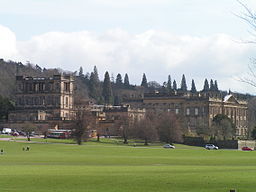 Chatsworth House
Chatsworth HouseAs evidenced in multiple Austen novels, people in the Regency era were as enthralled with the grand houses and estates as we are today. The biggest difference is that then the homes were still occupied, with the majority of rooms still being used by the family.
One must wonder who first had the courage to knock on the door and pay a housekeeper to take them on a tour of someone else’s house. There is little doubt that payment of some form was involved. Servants were used to garnering tips from invited house guests. How much more would they expect from an uninvited stranger?
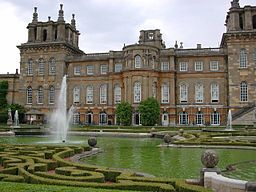 Blenheim Palace
Blenheim PalaceJournals and letters from the time period do bring into question how often people were actually admitted into various houses, but the practice of requesting a tour is brought up enough to assume there was a certain level of success. Some houses were visited so frequently that they actually designated certain days for public tours.
Some of these houses are still open to the public today. Many have maintained their styling and furniture from the 19th century, giving you a fair idea of what they would have looked like during the Regency period.
 Cliveden
Cliveden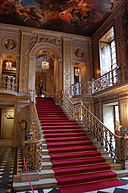 Main Hallway at Chatsworth House
Main Hallway at Chatsworth HouseOnce such house is Chatsworth. Immensely popular as a tourist attraction during the Regency, the house is maintained for visitors today. Many think Jane Austen’s Pemberly was modeled after Chatsworth. Indeed it was even used for filming the Pemberly scenes in the 2005 film.
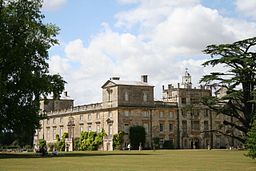 Wilton House
Wilton HouseOther popular homes that are still open for visits today include Blenheim Palace, Cliveden (which you can actually spend the night at for a hefty sum), Stowe, and Wilton House. For some houses, guidebooks were printed – often by the owner themselves. These books could be purchases in the village and brought along with you when you toured the house.
Have you toured any of the grand Regency estates in England? Which was your favorite?
 House and Grounds at Stowe
House and Grounds at StoweSources:
All pictures from Wikimedia Commons
All Things Austen: An Encyclopedia of Austen’s World – Travel article
A fine house richly furnished: pemberley and the visiting of country houses. (Conference Papers).
Various homes’ visitation pages, linked within the article.
Originally posted 2013-06-05 10:00:00.
The post The Grand Estate Tour ~ Visiting Regency Homes first appeared on Vanessa Riley's Regency Reflections.
Getting the Most From Regency Reflections
Did you know that Regency Reflections does much more than provide interesting tidbits on life in early 19th century England? It’s true! Just look at the features listed below. Some of them have been around since day one and others are brand new.
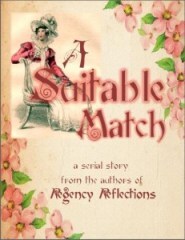 ~ A Free Fiction Fix ~
~ A Free Fiction Fix ~
Did you read our serial story in February? If not, take some time and read the short story created by our fabulous Reflections authors. The contest is long past, but the story is still fabulous. Read it all from the A Suitable Match page.
~ Inspirational Regency Book Listings ~
Have you see the book list page? If you are looking for your next inspirational Regency, we have several you can pick from! Look through books from Reflections authors as well as other wonderful writers. There’s even a style description to help you choose.
 ~ Inspirational Regency Book Recommendations ~
~ Inspirational Regency Book Recommendations ~
Maybe you have already read some of the books on our book list. We’d love for you to participate in the Thimble poll to tell others what you thought of the book.
~ Author and Reader Connections ~
We’ve always loved interacting with you in the comments, but there is now a brand new option for contacting us at Regency Reflections. You don’t have to wait for a relevant post – you can Come Calling! We’d love to hear from readers about topics they would like us to cover or books they love that are missing from our list.
You’ll notice our book list has is missing a few titles. If you are an author with a new inspirational Regency coming out, we want to hear from you as well. We’ll add your book to our list and possibly work out a guest post or author interview.
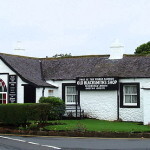 ~ Guest Posts ~
~ Guest Posts ~
Did you see the wonderful guest posts last week from Collette Cameron and Roseanna M. White? If you are an author or lover of Regency history, you might can guest post, too! Use the Come Calling form to tell us a little about what you would like to write and we’ll get in touch with you.
~ Contests ~
There’s no contest running right now, but there are more just around the corner! We’ve been known to give away books, gifts cards, and lots of other wonderful goodies! Just a few weeks ago, one lucky reader won a brand new Nook. So when’s our next contest? We can’t say for sure – the fun of surprise and all – but you might want to make sure you’re keeping up with the blog in August. Wink, wink.
~ History, Trivia, and Fun from the Reflections Authors ~
As always we have our fabulous posts from our regular contributing authors. We love discovering little historical facts and passing them along to you. Want to learn more about your favorite bloggers? Visitor our editors page for bios and links. Many of our authors write in eras other than just Regency England, so your favorite blogger might have more books out there than you realize!
We hope you love Regency Reflections as much as we do. Remember to let us know in the comments below or on our new contact page what we can do to make it even better for you!
Originally posted 2013-06-03 10:00:00.
The post Getting the Most From Regency Reflections first appeared on Vanessa Riley's Regency Reflections.
March 28, 2025
How to Be Married Without Getting Married in Regency Era Scotland ~ Guest Post by Collette Cameron
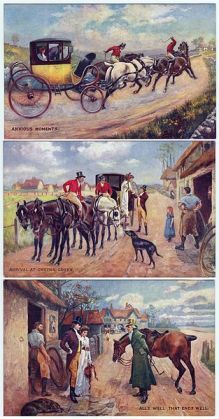 A series of pictures depicting a couple’s hasty flight to Gretna Green and subsequent marriage. Via Wikimedia Commons
A series of pictures depicting a couple’s hasty flight to Gretna Green and subsequent marriage. Via Wikimedia CommonsMy quandary was how to get Yvette married to Ewan without her knowing it. Was it possible to simply say you were married in 1817 Scotland and, poof, you were indeed legally married? Would the marriage be recognized by the Church of Scotland?
Those are the thoughts that sprang into my mind one day while contemplating the dilemma. I wasn’t considering handfasting either, which by the 18th century, was no longer recognized by the Kirk (Church) of Scotland.
No, I needed something recognized by the Scot’s Church. I starting digging into Scot’s marriage laws of the 1800s and was pleased-as-punch to come across Scot’s Canon Code and irregular marriages. In essence, anyone could perform a marriage ceremony as long as the parties involved expressed consent to the union, either in person or in writing. Most romance readers are familiar with Gretna Green, and the romantic notion of couples trotting off to Scotland to get married—quite literally over a blacksmith’s anvil. Well, that was part of the Canon Code.
Irregular and clandestine marriages—those not performed by a cleric of the church—included simply agreeing to take one another as husband and wife before two witnesses (Gretna Green), cohabitating in Scotland under the ruse of being wed, and finally, by merely declaring you were married—even if no ceremony had taken place. You could also agree to marriage in writing with express consent. There was no particular form, either verbally or written, required for the marriage to be valid and binding.
 A Blacksmith Shop in Gretna Green – not required for Scottish marriages. via Wikimedia Commons
A Blacksmith Shop in Gretna Green – not required for Scottish marriages. via Wikimedia CommonsI arranged for Yvette and Ewan to claim they were married in the midst of a very dangerous situation in order to prevent Yvette from being ravished. I reinforced it by having Ewan declare to several kin and clans members that he and Yvette were married, and then I had them cohabitate at Craiglocky Keep under the guise of marriage. Yvette was unconscious for the first four days she was at Craiglocky, so she wasn’t in a position to protest the implied marriage.
I did take a bit of liberty with the code, but then, isn’t that what we authors do? I’ve got another story fermenting in my mind, and I do believe I’m going to use the written agreement as an segue to an irregular marriage.
Just an aside, Gretna Green is still a wildly popular marriage venue in Scotland. I have an unmarried daughter. She wants to get married in Scotland. . .
Excerpt from the Great Hall scene when Yvette discovers she’s legally married to Ewan.
Yvette stood on unsteady legs, grasping the table’s edge for balance. She strove for poised composure, despite feeling like a powerless pawn in a despicable game of human chess, played for the amusement of those who enjoyed tragic endings at the expense of someone else’s happiness-no-their very existence.
The Great Hall radiated silent tension. All eyes were on her. She looked at the strangers staring at her, their eyes reflecting a myriad of emotions. Embarrassment, horror, dismay, pity, outrage, compassion, and yes—even a few smugly satisfied.
“You knew?” She looked to Hugh and Duncan, before swinging her gaze to Alasdair and Gregor. They bowed their heads in chagrin. Her turbid gaze swept the rest of Ewan’s family.
“You all knew?” Yvette searched Giselle’s sorrowful eyes, then Adaira’s tear-filled ones. “You must think me such a fool.” Her agonized whisper exposed her vulnerability. Her shame. Her absolute humiliation.
Ewan touched her arm. “Evvy—”
She whirled around. “Don’t you touch me,” she hissed between stiff lips.
Yvette knew her gaze was a mirror of desolation when she finally met his eyes. “How could you?” she whispered. “I trusted you.” She’d never make that mistake again.
He reached for her again. “Please . . .”
She slapped away his hand. “Don’t.”
She clenched her teeth to still her quivering mouth and chin. Closing her eyes against the torrent of tears cascading down her face, she drew in a bracing breath.
Lord, give me the strength to walk from this room with my head held high.
On wooden legs, she stepped away from her chair.
Ewan grasped her elbow, restraining her. “Evvy, I don’t know what she told you, but . . .”
 Collette Cameron, a Pacific Northwest native, was born and raised in a small town along the northern Oregon coast, which to this day, continues to remain one of her favorite retreats. An enthusiast of times gone by, Collette currently writes Regency historical romance.
Collette Cameron, a Pacific Northwest native, was born and raised in a small town along the northern Oregon coast, which to this day, continues to remain one of her favorite retreats. An enthusiast of times gone by, Collette currently writes Regency historical romance.
You can find out more about Collette by visiting her author page, www.collettecameron.com. If you found this article and excerpt interesting, you might also want to learn more about her most recent book, Highlander’s Hope.
Originally posted 2013-05-31 10:00:00.
The post How to Be Married Without Getting Married in Regency Era Scotland ~ Guest Post by Collette Cameron first appeared on Vanessa Riley's Regency Reflections.
The War of 1812 ~ Guest Post by Roseanna M. White
 The Chasseur, one of the most famous privateers of the War of 1812. This Baltimore
The Chasseur, one of the most famous privateers of the War of 1812. This Baltimorecaptain harassed the British merchant fleet in their own waters.
You know, it’s really kind of funny. When reading the Regency-set novels I so love, I often find references to the on-going war with France and the audacity of Napoleon. Only rarely, however, do we see the British perspective of another war going on at the same time, one with the upstart Colonists that had declared their independence a generation before. Even America often forgets their War of 1812, and in Europe…well, it tends to dim in comparison to the Napoleonic Wars. It’s become overlooked by both sides. But oh, how interesting it is!
In 1811, England had been fighting France for long enough that the escalating troubles with America were little more than a nuisance at first. They sent men and ships, but for the first two years of the war, their focus remained set upon France. In North America, they were concerned largely with protecting their Canadian assets, using raids along the Chesapeake to distract American forces from their invasion northward. After Napoleon surrendered, however, everyone–both British and American–new exactly what it meant.
It was time for the fighting to get serious in America.
Not only were those in the Admiralty tired of fooling around with the upstarts, but the citizenry were beginning to fuss about the audacity the Americans demonstrated in this second fight, even sending privateers to harass the British in their own waters! They demanded that the Americans’ cities be burned and her people crushed for their impudence. Ready, I daresay, for a breath of peace, more men and ships were sent from Europe to Bermuda and then, finally, to either the Chesapeake or Canada.
 Privateers engaged in battle during the War of 1812
Privateers engaged in battle during the War of 1812But the men were weary. After months and years of suffering in the war with Napoleon, followed by months idle on the ships across the Atlantic, their hearts weren’t in it. More, the humid mid-Atlantic summer–one of the hottest recorded–caused heat-stroke left and right. More men were felled by vicious storms and intense heat for the first few months than by the sword or shells.
For many, this second war with America was but a P.S. to the first. The Revolution went wrong, they were sure, because of bad leadership decisions. Their men–the fathers of those now in charge– were killed or injured because of this. So it was their duty to put it to rights, especially when America persisted in ignoring the laws of citizenship and rights-upon-the-seas that England had held to for centuries.
It was, for many of those involved, a war no one wanted to fight. It was an afterthought to some and forgotten by many more since. A war based on little more than affronted prides. But like any other, it was also a war with heroes and bravery and determination. And as such, it deserves to be remembered.
Especially now, during its two-hundredth anniversary.
~*~
[image error]Roseanna M. White pens her novels under the Betsy Ross flag hanging above her desk, with her Jane Austen action figure watching over her. When she isn’t writing fiction, she’s editing it for WhiteFire Publishing or reviewing it for the Christian Review of Books, both of which she co-founded with her husband. The first book in her Culper Ring Series, Ring of Secrets, is set during the American Revolution and available now.
Fairchild’s Lady, a FREE bonus novella starring a secondary character from that first book is available for pre-order and will release June 1. The second book in the series is set during the War of 1812–Whispers from the Shadows releases this August.

Originally posted 2013-05-29 10:00:00.
The post The War of 1812 ~ Guest Post by Roseanna M. White first appeared on Vanessa Riley's Regency Reflections.
March 27, 2025
What to do with all that grass ~ Lawn Games in Regency England
Battledore and Shuttlecock
One such game that was popular during Regency England was Battledore and Shuttlecock. A combination of modern day badminton and hacky-sack, two or more players would attempt to keep the feathered shuttlecock in the air by hitting it with small rackets, called battledores.
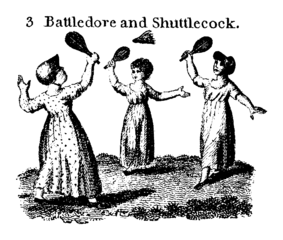 Three young girls play Battledore and Shuttlecock, via Wikimedia Commons
Three young girls play Battledore and Shuttlecock, via Wikimedia CommonsAs near as anyone can tell, this game originated in Greece around 1BC. Although it appears to have initially spread east from there so he likely never played it, the fact that people played this game while Jesus walked the earth is a little mind-boggling.
The game remained largely unchanged until the mid-1800s when the English added a net to the game and it became badminton.
It isn’t surprising, really, that such a simple game remained popular for so long, when you consider people’s natural tendency to play “keep it up” with just about anything. The hack-sack craze in the 1990s, a beach ball in a stadium full of people, or a balloon in the midst of more than one toddler. We love to see how long we can defy gravity.
Bowls
Similar to modern day Bocce, Bowls, or lawn bowling, is not nearly as old at Battledore and Shuttlecock, but it was certainly not new to the Regency game player. Definitively traced back to the 13th century, Bowls was played with a series of balls, specially formed with a bias so they would roll on a curve.
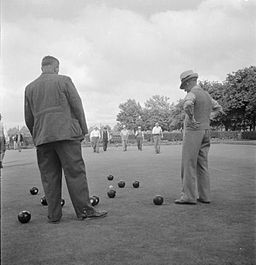 This picture of men playing bowls in 1945 will give you an idea of how the game looked. Picture via wikimedia commons
This picture of men playing bowls in 1945 will give you an idea of how the game looked. Picture via wikimedia commonsIn simple terms, Bowls is played by seeing who can get their ball the closest to the “jack” a smaller white ball thrown out at the beginning of the game as a target. This game could be played alone or in teams, making it ideal for either a leisurely family afternoon or a house party event.
The game became so popular, that Henry VIII feared the practice of archery – then a crucial element of battle – would suffer. He made it illegal for all but the wealthy to partake of the game, leaving those who made bows, arrows, and arrowheads plenty of time to work on their craft. Even the well-to-do were limited, with the rule that they could only play on their own lands and must pay a fee of 100 pounds to maintain their own bowling green.
This ban was lifted shortly after the Regency ended and today it remains one of the main lawn games played in English-cultured nations around the world.
Did you play lawn games growing up? What is your favorite? What
Originally posted 2013-05-27 10:00:00.
The post What to do with all that grass ~ Lawn Games in Regency England first appeared on Vanessa Riley's Regency Reflections.


